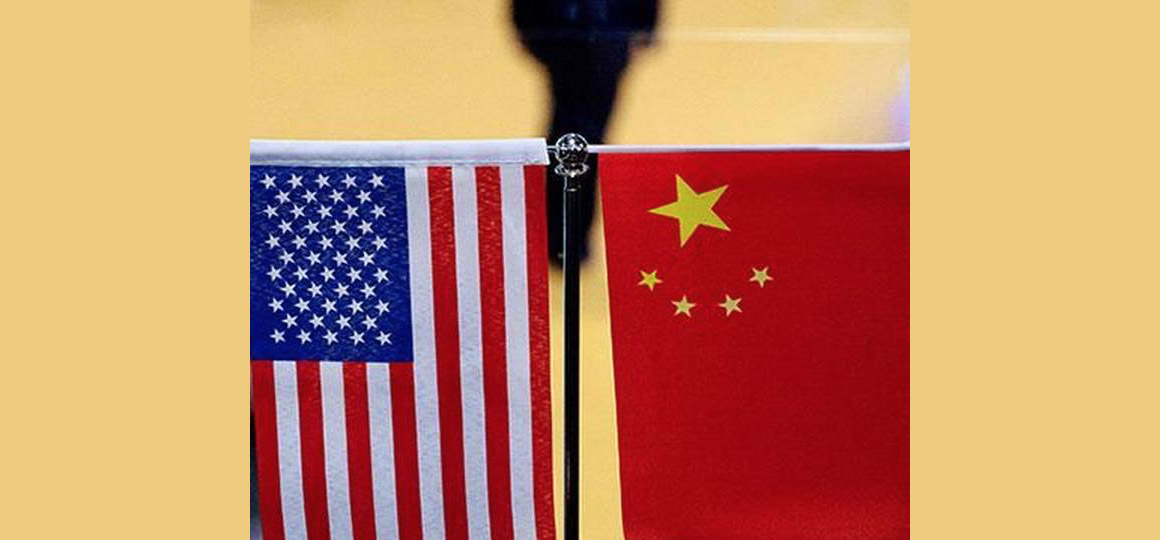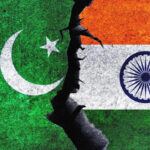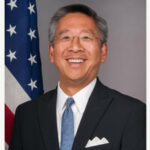Any reset in relations from turbulent Trump era is unlikely.
A sharp exchange between top U.S. and Chinese officials in Alaska on Friday, played out fully in the eyes of the gathered media, marked the start of a new phase in U.S.-China relations — one that comes with fresh challenges for India.
If the acrimonious public exchange appeared to be a surprising departure from the diplomatic norms usually followed in such scripted meetings, it was, on one level, entirely expected.
After all, both sides had made clear in the lead-up to the Biden administration’s first in-person engagement with China that the meeting in Anchorage was more about drawing red lines than any real attempt at a reset. Even describing what the meeting actually was had emerged as a point of discord, labelled by Beijing as a “strategic dialogue” even as Washington disputed that description.
Secretary of State Antony Blinken, accompanied by National Security Adviser Jake Sullivan for the talks with Yang Jiechi, Politburo member and Director of the Central Commission for Foreign Affairs, and Wang Yi, the Foreign Minister, set the tone by expressing “deep concerns with actions by China, including in Xinjiang, Hong Kong, Taiwan, cyberattacks on the U.S., and economic coercion toward our allies”.
These actions, he said, threatened “the rules-based order that maintains global stability”, as he framed the Biden administration’s view of ties with China as being “competitive where it should be, collaborative where it can be, adversarial where it must be”
What followed was a 16-minute speech from Mr. Yang, going far beyond the expected two-minute opening statement, which he said he “felt compelled to make” because “of the tone of the U.S. side”. Mr. Yang slammed the “so-called rules-based international order” which he said was “advocated by a small number of countries” — the U.S.-India-Japan-Australia “Quad”, incidentally, is among them. To Washington’s contention that it was engaging China from a position of strength — the Alaska meeting pointedly followed the Quad leaders’ summit last week and Mr. Blinken’s recent visits to Japan and South Korea — Mr. Yang retorted, “the U.S. does not have the qualification to say that it wants to speak to China from a position of strength”. The remarks were widely circulated in the Chinese media, welcomed as reflecting a new dynamic in the relationship.
The message from Beijing was that if Washington expected this meet to be about a one-way drawing of the red-lines, it was clearly mistaken. Meanwhile, the unequivocal message from Washington was that the Biden administration will certainly not be an Obama 2.0, a time when both sides emphasised cooperation.
Key takeaways
The main takeaway from Alaska is that any reset in ties from the turbulent Trump era is unlikely. At the same time, the acrimonious beginning, which to some degree was a result of public posturing by both sides who were concerned about sending the right messages to their audiences at home, may give way to some cautious engagement.
If China made a concession by travelling to Alaska, a point made by its officials, a return visit to Beijing by Mr. Blinken in coming months, should it take place, will underline that both sides are still seeking spaces to work together amid the rancour. Both, for instance, could still agree to cooperate on issues like climate change, the global economic recovery, and Afghanistan.
The other takeaway is the emergence of a drawing of battle lines between Washington and its allies on one side, and on the other, Beijing and its main ally when it comes to the Indo-Pacific and Eurasia, Russia. China was quick to announce, before the Alaska talks, that Russia’s Foreign Minister Sergey Lavrov will visit Beijing, days after President Biden called Russia’s Vladimir Putin “a killer”.
This will particularly pose a test for India’s diplomacy, starting with affecting India’s defence supplies from Russia, with the U.S. making it clear that importing Russian equipment like the S-400 missile defence system will attract sanctions as well as the U.S. withholding high-tech exports.
While India confronts its own problems with China amid a slow-moving disengagement process along the Line of Actual Control (LAC), it has still made clear it does not want to be part of any alliances. This balancing act is reflected in India’s varying multilateral engagements, ranging from the Quad to groupings like RIC (Russia-India-China), the BRICS, and the China and Russia-led Shanghai Cooperation Organisation.
The U.S.-China divide will also mean a tightrope walk for India at the UN Security Council, where it is serving a two-year term as non-permanent member, as the split between the U.S, the U.K and France on the one hand and Russia and China on the other grows ever wider, as seen in response to the Myanmar coup.
New phase of U.S.-China ties comes with tests for India
Any reset in relations from turbulent Trump era is unlikely.
A sharp exchange between top U.S. and Chinese officials in Alaska on Friday, played out fully in the eyes of the gathered media, marked the start of a new phase in U.S.-China relations — one that comes with fresh challenges for India.
If the acrimonious public exchange appeared to be a surprising departure from the diplomatic norms usually followed in such scripted meetings, it was, on one level, entirely expected.
After all, both sides had made clear in the lead-up to the Biden administration’s first in-person engagement with China that the meeting in Anchorage was more about drawing red lines than any real attempt at a reset. Even describing what the meeting actually was had emerged as a point of discord, labelled by Beijing as a “strategic dialogue” even as Washington disputed that description.
Secretary of State Antony Blinken, accompanied by National Security Adviser Jake Sullivan for the talks with Yang Jiechi, Politburo member and Director of the Central Commission for Foreign Affairs, and Wang Yi, the Foreign Minister, set the tone by expressing “deep concerns with actions by China, including in Xinjiang, Hong Kong, Taiwan, cyberattacks on the U.S., and economic coercion toward our allies”.
These actions, he said, threatened “the rules-based order that maintains global stability”, as he framed the Biden administration’s view of ties with China as being “competitive where it should be, collaborative where it can be, adversarial where it must be”
What followed was a 16-minute speech from Mr. Yang, going far beyond the expected two-minute opening statement, which he said he “felt compelled to make” because “of the tone of the U.S. side”. Mr. Yang slammed the “so-called rules-based international order” which he said was “advocated by a small number of countries” — the U.S.-India-Japan-Australia “Quad”, incidentally, is among them. To Washington’s contention that it was engaging China from a position of strength — the Alaska meeting pointedly followed the Quad leaders’ summit last week and Mr. Blinken’s recent visits to Japan and South Korea — Mr. Yang retorted, “the U.S. does not have the qualification to say that it wants to speak to China from a position of strength”. The remarks were widely circulated in the Chinese media, welcomed as reflecting a new dynamic in the relationship.
The message from Beijing was that if Washington expected this meet to be about a one-way drawing of the red-lines, it was clearly mistaken. Meanwhile, the unequivocal message from Washington was that the Biden administration will certainly not be an Obama 2.0, a time when both sides emphasised cooperation.
Key takeaways
The main takeaway from Alaska is that any reset in ties from the turbulent Trump era is unlikely. At the same time, the acrimonious beginning, which to some degree was a result of public posturing by both sides who were concerned about sending the right messages to their audiences at home, may give way to some cautious engagement.
If China made a concession by travelling to Alaska, a point made by its officials, a return visit to Beijing by Mr. Blinken in coming months, should it take place, will underline that both sides are still seeking spaces to work together amid the rancour. Both, for instance, could still agree to cooperate on issues like climate change, the global economic recovery, and Afghanistan.
The other takeaway is the emergence of a drawing of battle lines between Washington and its allies on one side, and on the other, Beijing and its main ally when it comes to the Indo-Pacific and Eurasia, Russia. China was quick to announce, before the Alaska talks, that Russia’s Foreign Minister Sergey Lavrov will visit Beijing, days after President Biden called Russia’s Vladimir Putin “a killer”.
This will particularly pose a test for India’s diplomacy, starting with affecting India’s defence supplies from Russia, with the U.S. making it clear that importing Russian equipment like the S-400 missile defence system will attract sanctions as well as the U.S. withholding high-tech exports.
While India confronts its own problems with China amid a slow-moving disengagement process along the Line of Actual Control (LAC), it has still made clear it does not want to be part of any alliances. This balancing act is reflected in India’s varying multilateral engagements, ranging from the Quad to groupings like RIC (Russia-India-China), the BRICS, and the China and Russia-led Shanghai Cooperation Organisation.
The U.S.-China divide will also mean a tightrope walk for India at the UN Security Council, where it is serving a two-year term as non-permanent member, as the split between the U.S, the U.K and France on the one hand and Russia and China on the other grows ever wider, as seen in response to the Myanmar coup.






NO COMMENT